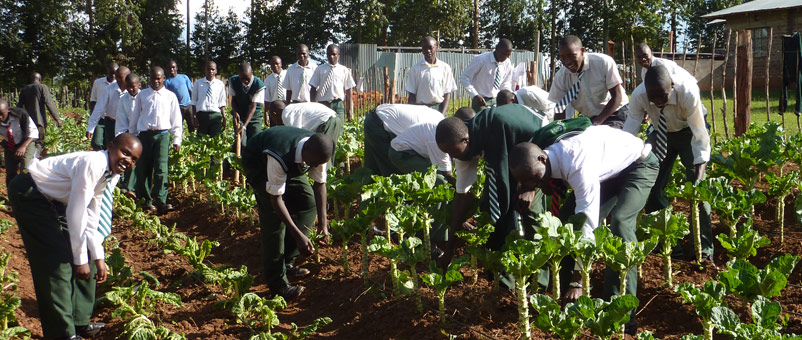My grandmother would sit us by the fireside after a long day of looking after her livestock. She would tell us how she used to plant crops; there was no use of organic fertilizer, just removing vegetation cover by slashing and planting the crops using hoes. There was little disturbance to the soil structure. The cover material would protect the soil from water erosion, which is the main type of erosion in the area.. This resulted in a maize plant producing 2-3 maize cops. Her granary was full all year round and the cost of production was very low.
However, over time this has drastically changed. I have spent time looking for ways to increase yield on my father’s five acre farm in Rift valley, Kenya. We use fertilizers to increase yield and we plough using heavy tractors whose ploughing discs dig deep into the soils. These farm practices are essential for our small farm, which is our source of livelihood, to meet our family needs in terms of food and income. However it is sad that our crop productivity is reducing as the quality of soil is being degraded over time by increasing soil acidity and compactness.
It is a story every family in my region can relate to; the soil quality has been degraded over time and with population increasing, we find ourselves producing less. It is from this background that I became interested in studying Geospatial science with interest in applying it in managing natural resources. Geospatial technologies allow us to map degraded areas and then model scenarios that can be applied in a landscape to achieve sustainable production while at the same time conserving the soil.
I have observed that in particular, there is need to involve my fellow youths since I cannot bring the change that I desire alone. My peers and I knew we needed to address the degraded and acidic soils in my area. We realized the Ministry of Environment could not reach us, so we challenged ourselves to begin our own initiative to promote soil conservation. I have therefore been working with youth groups in my village encouraging them about the need to plant trees and teaching them about the use of open source mapping tools which helps us identify areas that needs intervention.
We used whatever resource within our disposal, as we had no funding. First I identified locations that had been extensively eroded by water. This was pretty easy, since I knew how to analyze it using Geographic Information System (GIS). Together with a small group of youth who had completed high school, I downloaded QGIS an open source mapping software and free satellite images. By carrying out land cover mapping, and analyzing soil and rainfall amounts, we were able to identify areas at risk of water erosion.
We then visited the sites we had modeled. Interestingly, we could see the area had lost much of the soil as a result of water erosion. So, we planted tree seedlings, which we transplanted during the rainy season. As part of our ongoing mission to safeguard our environment, we are now in the process of ensuring every household plants trees in their compound as one way of increasing tree cover in the area and protecting the soil from water erosion,
Over time, I have seen a lot of enthusiasm from the youth since they are eager to learn new technologies. They have time, energy and resources such as internet, which means they can contribute a lot to conservation of soil and environment in general. One way to involve them is to use the means they like most, such as social media to create awareness. This is how youth organisations like YPARD organize meetings, and update each other of the progress we are making since we are often far from one another.
In addition, facilitating young people to form groups and organizing competition will encourage most of them to participate in coming up with ideas and projects that will improve soil health. There is also need to support youth initiatives by providing technical and financial support, as this is one of the major hindrances to their active participation in conservation. Apart from this, there is a need to provide youth with a platform to showcase their activities and involve them in high-level meeting where policies are formulated and have their voice heard.
In conclusion, I am always reminded of the words of the late Prof. Wangari Mathai “ To the young people I say, you are a gift to your communities and indeed the world”. This should be our motivation as the youth to actively improve soil health since it is the source of our wealthy.



